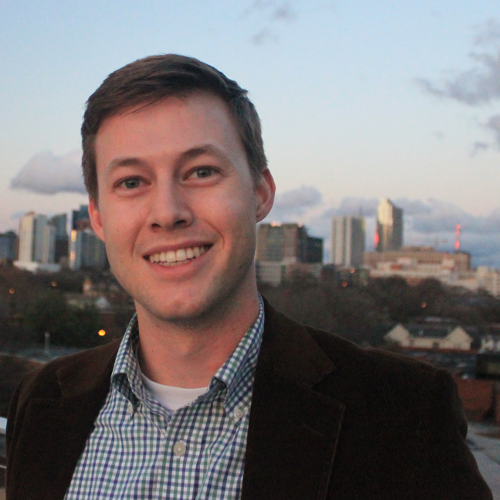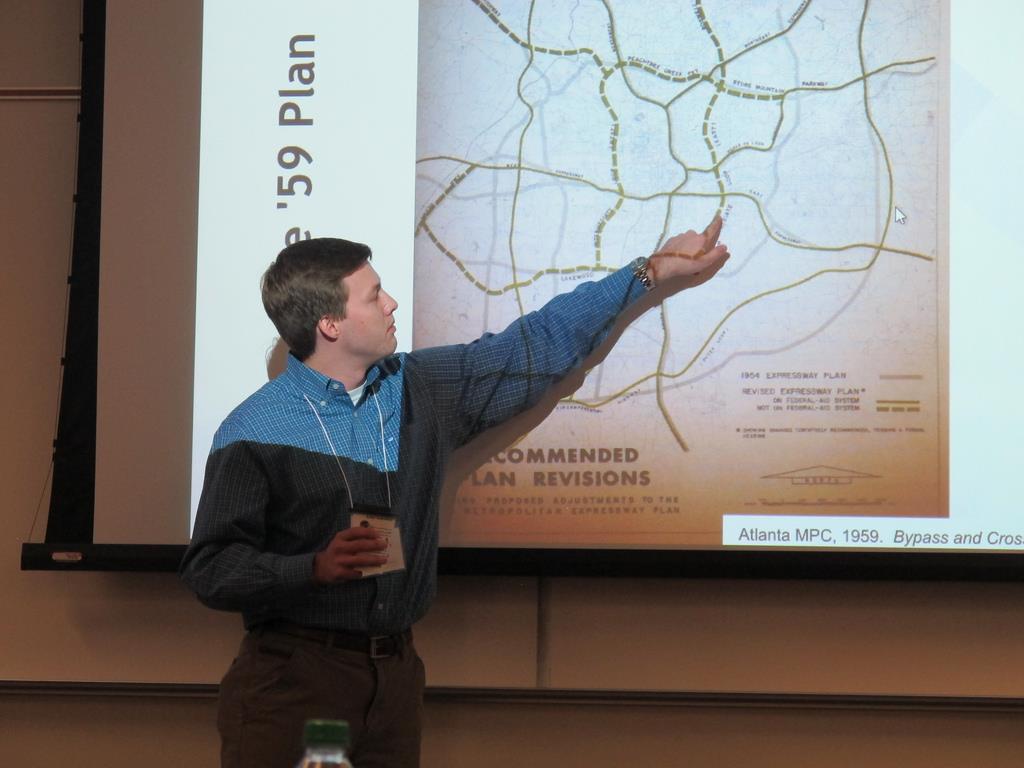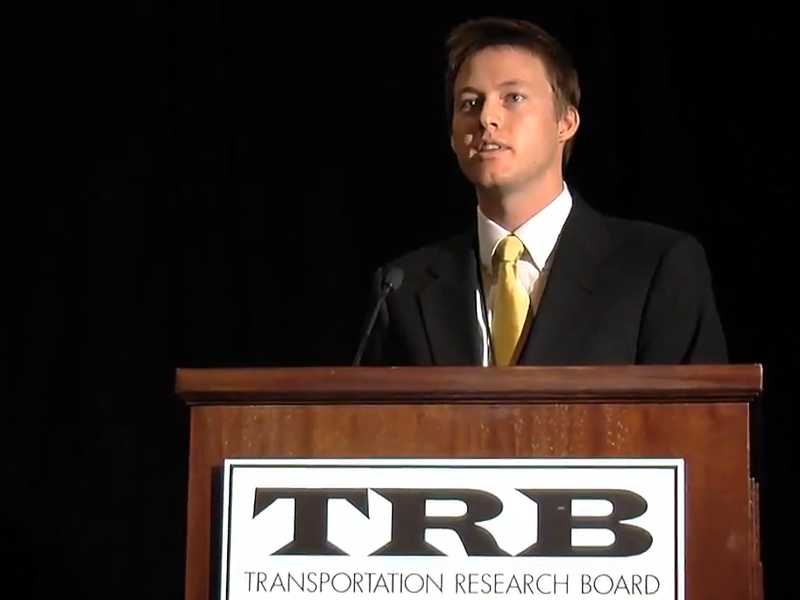Aaron Greenwood

Doctoral student Aaron Greenwood becomes very animated when he talks about civil engineering.
“It’s in my blood!” he says. “My Dad is a civil engineering, same as my grandfather, my uncle and four cousins. We joke sometimes that we could start our own consulting firm.”
The consulting firm will have to wait, for now. This summer he plans to teach an undergraduate course, Introduction to Transportation Planning Operations and Design, at Georgia Tech. Then, it’s back to his research, which includes collaboration with his advisor, Dr. Michael Hunter, on a GDOT-sponsored study of work zones and a UTC-funded project on traffic control devices.
Greenwood is interested in making highways safer not just through better design but by understanding how drivers interact with, and respond to, their surroundings.
“By pulling from the field of cognitive science, you can see how people react to traffic devices and work zones, and we can measurably do without having to do field testing in a dangerous environment.”
His engineering research seamlessly integrates psychology and computer science into his analysis of interface design and human-machine interactions. The cross-disciplinary approach allows him to develop a more comprehensive analysis of human interactions with the built environment.

“You get a very different perspective from those fields,” he notes. “People in the School of Psychology are very receptive to my work. As engineers, we often get wrapped up in standards and costs, whereas psychologists are concerned with the basic research: how does someone see a dot on the screen.”
“You look at a work zone and there’s a lot going on: flashing lights, giant equipment. There’s a lot to distract you. In our field, we’re not quite sure how people start to look around that -- there are theories that have helped, but quantifying that is what I want to focus on.”
Currently Greenwood is working on a few projects, including "Improved Methods for Delineating Diverges in Work Zones" and "Factors Influencing Visual Search in Complex Driving Environments."
As enthusiastic as he is about this trans-disciplinary research, Greenwood is very excited about teaching his first undergraduate class.
“It’s the students’ first chance to learn about transportation planning, road design, and how to accommodate different road users. It’s a great opportunity to get them hooked,” he said. “Transportation hits every aspect of your life. If you’ve done it right, it works. And if it works you don’t worry about it. So, even if those civil engineering students are not going to continue studying transportation, they will still come away from this class as better users of the system in general.”
Greenwood was recently elected president of the GT chapter of the Institute of Transportation Engineers and is also chairing the new Campus Planning Student Advisory Board. Last year, he served as the Vice President of Student Welfare on the Student Government Association, planning the career symposium and working on other career development initiatives.

As for his own career, Greenwood has some very definite plans.“I really like teaching and conducting research at a university,” he says. “Your work has almost an immediate impact on how the system works. As soon as we make our recommendation, it can be implemented. That’s something I really want to keep up.”
That teaching will no doubt include continued consultations with the Georgia Department of Transportation (GDOT) on projects.
“I’m very impressed with their support of research and dedication to improving their system. Government often gets a bad rap for being stodgy, but that hasn’t been my experience with GDOT. They let us know what they want, but they also give us the freedom to answer questions in ways they may not have anticipated.”
“In the senior design process, they are interested in getting involved – sitting down with students, putting in a lot of time with them to help them understand the problems and solutions.”
Theme by Danetsoft and Danang Probo Sayekti inspired by Maksimer
